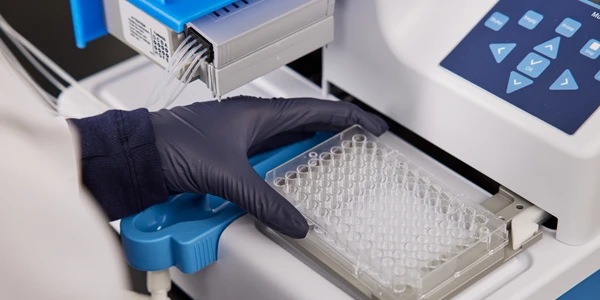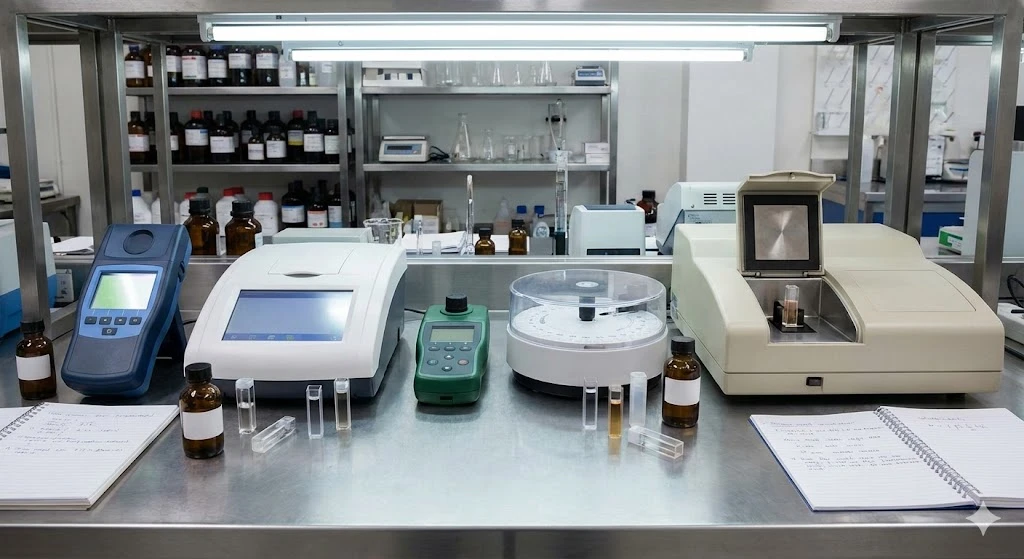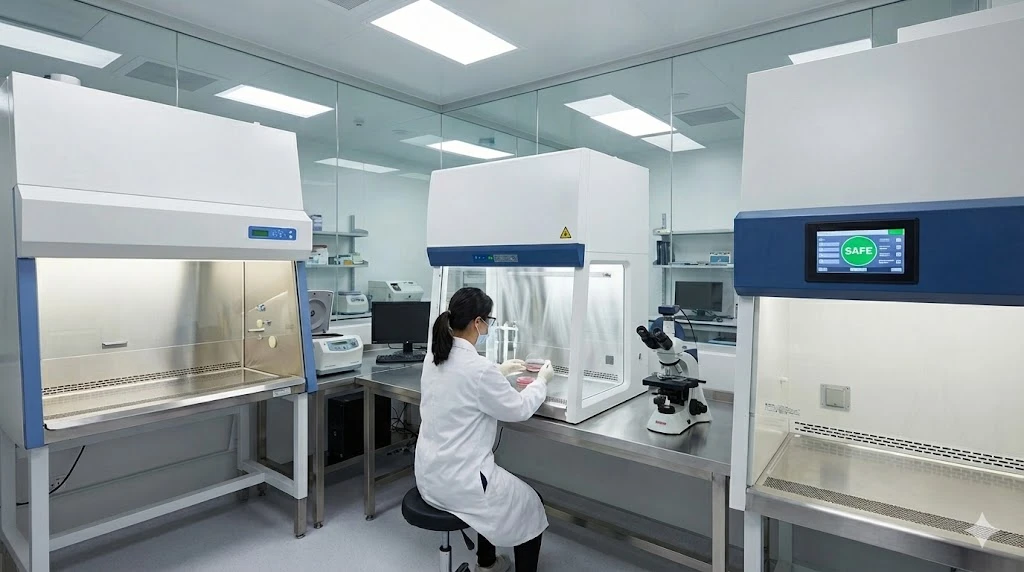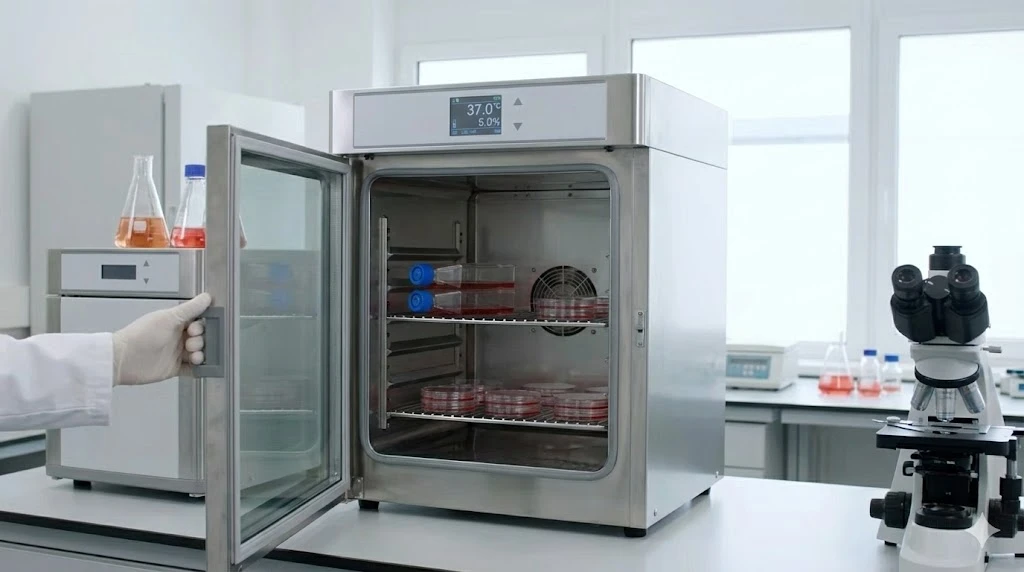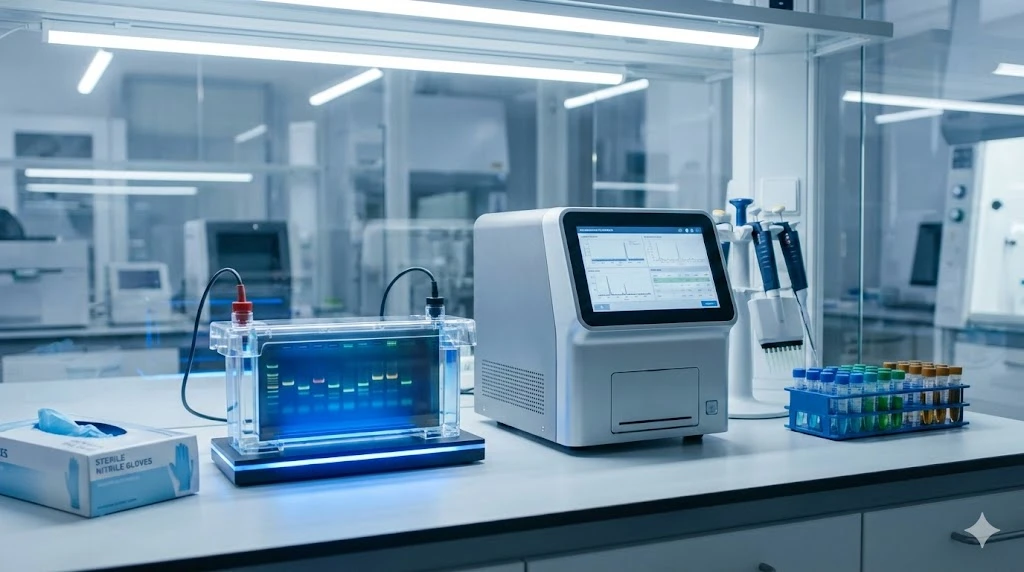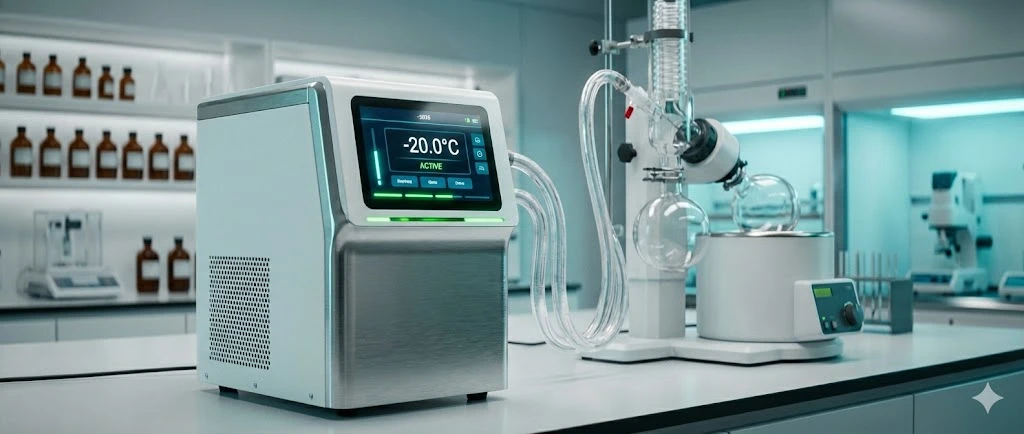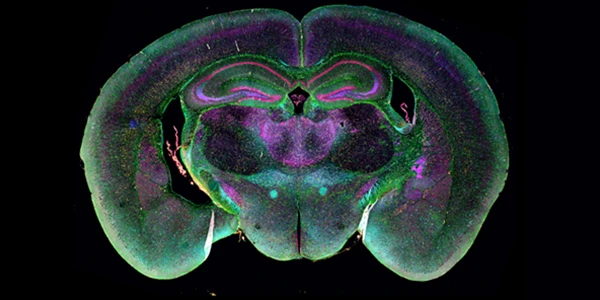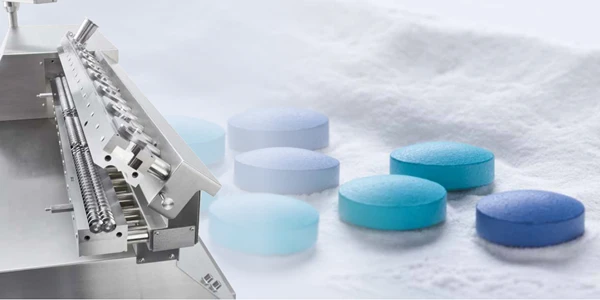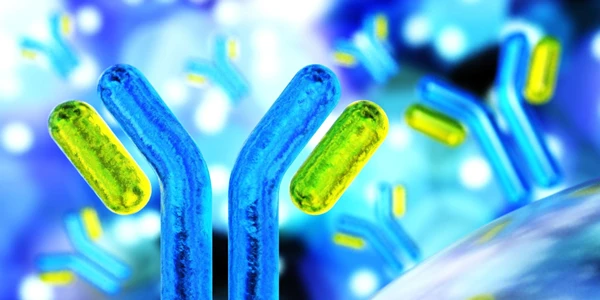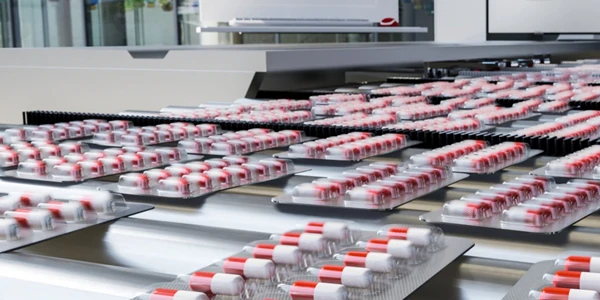Scintillation Counter Technology: Detecting and Measuring Radioactivity in Biological and Environmental Samples
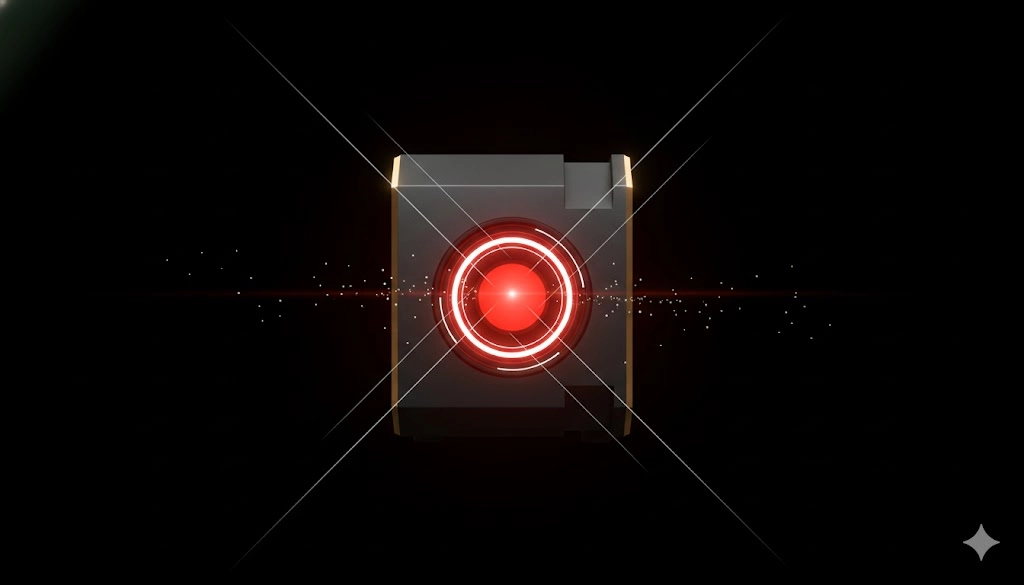
GEMINI (2025)
The accurate detection and quantification of radionuclides are foundational requirements across numerous scientific disciplines, from pharmaceutical research to ecological assessment. Mastery of scintillation counter technology is therefore crucial for maintaining the integrity and reliability of data generated in advanced laboratory workflows. The analytical power inherent in the scintillation counter allows laboratory staff to precisely measure the activity of low-energy beta emitters like tritium (³H) and carbon‑14 (¹⁴C), which are indispensable tracers in life sciences and ubiquitous markers in environmental studies. Establishing and adhering to rigorous standard operating procedures for these instruments directly impacts scientific outcomes and compliance with industry and regulatory standards worldwide.
The Core Principles of Scintillation Detection and Signal Transduction
The operation of a scintillation counter relies on a multi‑stage process that converts the energy of ionizing radiation into a measurable electrical pulse. This mechanism begins when a radionuclide emits radiation (typically alpha, beta, or gamma particles), and that radiation interacts with a specialized material known as a scintillator, or fluor.
The Scintillation Mechanism
When the emitted radiation enters the scintillation medium, it transfers its kinetic energy to the solvent molecules, resulting in their excitation and subsequent ionization. These excited solvent molecules then transfer energy to the primary fluor molecules within the cocktail. The primary fluor molecules undergo excitation and, as they rapidly return to their ground state, emit light—specifically photons. This light emission is the core phenomenon of scintillation.
The light produced by the primary fluor is often in the ultraviolet range, which is difficult for standard detectors to efficiently capture. To optimize detection, a secondary fluor (or wavelength shifter) is typically included in the mixture. The secondary fluor absorbs the UV light from the primary fluor and re‑emits it at a longer wavelength, shifting it into the visible light spectrum where the photomultiplier tube (PMT) is most sensitive. The intensity of the light flash produced is directly proportional to the energy deposited by the incident radiation.
Photomultiplier Tube (PMT) and Pulse Processing
The photons generated by the scintillation process are collected by one or more PMTs. The PMT is a highly sensitive vacuum tube that transforms light energy into an electrical signal.
Photocathode Conversion: The incoming photons strike the photocathode, causing the emission of electrons via the photoelectric effect.
Dynode Multiplication: These primary electrons are accelerated toward a series of electrodes called dynodes, each held at a successively higher positive voltage.
Cascading Amplification: When an electron strikes a dynode, it releases multiple secondary electrons (a process known as secondary emission). This cascading effect amplifies the initial signal, resulting in a large, measurable pulse of current at the PMT anode.
The magnitude of the final electrical pulse is proportional to the energy of the original event, providing the basis for energy spectroscopy. The electronic circuitry associated with the scintillation counter analyzes these pulses, distinguishing them from background noise and sorting them into energy bins to produce a spectrum or simply tallying the number of disintegrations per unit time. The choice between methodologies, such as whether to use liquid vs. solid scintillation counting, often hinges on sample matrix, detection limits, and the required throughput of the laboratory.
Essential Considerations for Sample Preparation and Measurement Integrity
Achieving accurate and reproducible results with a scintillation counter is fundamentally dependent on meticulous sample preparation. This stage is critical for maximizing counting efficiency and minimizing confounding effects.
Scintillation Vials and Cocktail Chemistry
The selection of the appropriate container and chemical cocktail is not merely a matter of convenience; it is a scientific decision that directly influences the detection limits and overall performance of the measurement.
Vial Selection: Scintillation vials must possess low background counts and be chemically resistant to the solvent components of the cocktail. Common materials include glass and polyethylene. Glass vials offer superior chemical compatibility for aggressive solvents but are prone to self‑absorption effects and higher background counts due to naturally occurring radionuclides within the glass matrix. Polyethylene (plastic) vials, conversely, offer a lower background and are typically more cost‑effective but may swell or degrade when exposed to certain organic solvents.
Cocktail Chemistry: Scintillation cocktails are complex mixtures formulated to ensure efficient energy transfer from the radiation to the PMT. A cocktail typically consists of:
Solvent: The bulk medium that absorbs the radiation energy (e.g., dioxane, xylene, or pseudocumene).
Primary Fluor (PPO, Butyl‑PBD): The component that emits light after energy transfer.
Secondary Fluor (POPOP, Bis‑MSB): The wavelength shifter that ensures photons reach the PMT efficiently.
Surfactant/Emulsifier: Used when aqueous or insoluble samples must be introduced, allowing the sample to mix with or be suspended in the organic solvent system.
The careful consideration of these chemical components is detailed in Selecting Scintillation Vials and Cocktails for Optimal Counting Efficiency.
Sample Matrix
| Sample Matrix Type | Suggested Cocktail Formulation Approach | Key Concern |
|---|---|---|
| Aqueous/Biological | Emulsifying or micellar cocktails | Sample capacity; maintaining micelle stability |
| Organic/Non‑polar | High‑capacity organic solvent cocktails | Chemical compatibility with vial material |
| Filter‑supported | Thixotropic gel or high‑solvency cocktails | Avoiding self‑absorption within the filter matrix |
The Critical Role of Quench Correction
Quenching is a ubiquitous phenomenon in liquid scintillation counting where the light output is reduced, leading to an underestimation of the true activity. Quench mechanisms interfere with the energy transfer or light collection process.
Chemical Quenching: Occurs when chemical impurities in the sample or cocktail interfere with the energy transfer from the solvent to the fluor or the subsequent light emission process. Examples include strong acids, bases, or colored compounds.
Color Quenching: Results from the absorption of the photons by the sample itself (if it is colored) before the light reaches the PMT photocathode.
Because quenching reduces the number of photons detected without altering the true radioactive decay rate, the laboratory must correct for its effect to report accurate disintegration rates (dpm). Modern scintillation counter instruments employ sophisticated methods for quench correction:
External Standard Channel Ratio (ESCR): A high‑energy gamma source (e.g., ¹³⁷Cs) is moved into position adjacent to the vial. The external source interacts with the vial and cocktail, and the resulting Compton scatter photons are used to generate a figure of merit (the channel ratio) that directly correlates with the degree of quenching in the sample.
Spectrum Analysis Methods (e.g., tSIE): These methods analyze the entire scintillation spectrum generated by the sample and use the shift or distortion of the beta energy spectrum to calculate a quench indicator.
Effective quench correction is paramount for ensuring accurate activity measurement, and comprehensive protocols for this aspect are vital for laboratory accreditation and data quality. The requirements for performing these essential calibrations are discussed further in Maintaining Scintillation Counters: Quench Correction and Efficiency.
Operational Excellence: Mitigating Background Noise and Optimizing Throughput
The accurate measurement of low‑level radioactivity, especially in demanding applications like environmental monitoring, requires constant vigilance against sources of interference. Minimizing background noise is a hallmark of high‑quality scintillation counter operation.
Sources and Management of Background Noise
Background noise refers to any counts recorded by the instrument that do not originate from the sample radionuclide of interest. Effective background mitigation improves the instrument's figure of merit, consequently lowering the minimum detectable activity (MDA).
Cosmic and Environmental Sources: Natural background radiation, including cosmic rays and gamma radiation from surrounding concrete or rock, can penetrate the instrument and interact with the PMT or vial. Modern instruments utilize passive and active shielding mechanisms to counteract this.
Instrument Noise: Thermionic emission from the photocathode and dynodes within the PMT contributes to dark current. Cooling the PMT detectors significantly reduces this thermal noise, improving the signal‑to‑noise ratio.
Vial Contamination: Trace contamination on the exterior of the vial or within the vial material itself is a critical source of background. Strict cleaning protocols and the use of low‑background vials (such as those containing low potassium content) are mandated.
Advanced Design Features for Enhanced Performance
Technological advancements in scintillation counter design have focused on sophisticated electronic discrimination techniques and improved shielding.
Pulse Shape Analysis (PSA): In certain scenarios (particularly when distinguishing between alpha/beta emitters or separating sample counts from background/chemiluminescence), the subtle differences in the decay time of the scintillation light pulse can be analyzed. PSA allows the instrument to electronically reject pulses that exhibit decay characteristics typical of background events rather than the desired sample events.
Coincidence Counting and Anti‑Coincidence Shielding: Most modern instruments use two PMTs positioned opposite each other (coincidence counting). A true scintillation event generates light that strikes both PMTs simultaneously. A count is registered only if both PMTs detect a pulse within a nanosecond time window, effectively rejecting random single‑photon events (thermal noise) that would only trigger one PMT. Advanced instruments incorporate anti‑coincidence guard detectors, where a background event detected by the guard and the sample detector triggers a rejection signal.
The evolution of these features contributes to the decreased MDA achievable today, as explored in Advances in Scintillation Counter Design for Reduced Background Noise.
Efficiency Determination and Traceability
Counting efficiency (ε) is the ratio of the detected count rate (cpm) to the true disintegration rate (dpm).
ε = cpm / dpm
The laboratory must generate a quench curve by counting a series of vials containing a known amount of a traceable standard (e.g., NIST‑traceable ¹⁴C) at varying levels of quenching agent. This curve provides the mathematical relationship between the quench indicator (ESCR or spectral index) and the counting efficiency. All unknown samples are then measured, their quench indicator determined, and the corresponding efficiency calculated from the stored quench curve for the final activity calculation.
Diverse Applications and Quality Assurance in Measurement
The versatility of scintillation counter technology ensures its indispensable role across diverse scientific and industrial sectors. Its high sensitivity and efficiency for low‑energy beta emitters make it a preferred technique in research and regulatory analysis.
Environmental Monitoring and Radiochemistry
In environmental and public health sectors, the scintillation counter is the primary tool for analyzing samples for regulatory compliance, source term assessment, and ecological studies. Key applications include:
Water Quality Assessment: Routine analysis of drinking water, wastewater, and groundwater for tritium and gross beta activity, often mandated by environmental protection agencies.
Soil and Sediment Analysis: Measuring naturally occurring and anthropogenic radionuclides (e.g., ⁴⁰K, ⁹⁰Sr, actinides) to assess contamination levels and track contaminant migration paths.
Air Filter Analysis: Detecting airborne particulate radioactivity collected on filters, providing real‑time data on potential atmospheric releases or fallout.
The application of this technology in these fields is vast and critical for public safety, as detailed in Applications of Scintillation Counting in Environmental Monitoring.
Biomedical and Pharmaceutical Research
The intrinsic ability of the scintillation counter to detect radiolabeled molecules enables its extensive use in life science research.
Drug Metabolism Studies: Using tritium or carbon‑14 labeled drug candidates to trace their uptake, distribution, metabolism, and excretion (ADME) kinetics in biological systems.
Receptor Binding Assays: Quantifying the concentration of radiolabeled ligands bound to cellular receptors to determine binding affinity (K_d) and receptor density.
Cellular Proliferation and DNA Synthesis: Measuring the incorporation of labeled precursors (e.g., ³H‑thymidine) into newly synthesized DNA to monitor cellular division rates.
Quality Assurance and Method Validation
For every analytical technique, comprehensive quality assurance (QA) protocols are non‑negotiable.
Instrument Calibration: Regular calibration of the energy channels and high voltage is necessary to ensure consistent energy‑to‑pulse height proportionality. This is typically verified using certified check sources.
Background Determination: The determination of the average background count rate is performed by measuring dedicated blank vials (containing cocktail and sample matrix without the analyte). This background value must be subtracted from every sample count.
Limit of Detection (LOD): The laboratory must rigorously determine and routinely verify the instrument’s LOD, which is often calculated using established statistical methods (e.g., the Currie equation) to ensure that reported non‑detects are statistically sound.
Reinforcing Professional Proficiency with Scintillation Technology
The scintillation counter remains an invaluable cornerstone of analytical radiochemistry and radiobiology, offering unmatched sensitivity and efficiency for low‑energy radionuclide detection. Consistent, high‑accuracy measurement is achieved through a multi‑faceted approach involving rigorous sample preparation, vigilant quench correction, and systematic background noise mitigation. Professionals working with this instrumentation must possess a deep understanding of energy transfer physics, cocktail chemistry, and the electronic principles of PMT operation and pulse analysis. By continually refining standard operating procedures related to quench curve generation and background monitoring, the laboratory reinforces data integrity, meets stringent regulatory requirements, and ensures the reliability of scientific outcomes across all disciplines utilizing this powerful detection technology.
FAQ
How does a scintillation counter differentiate between different types of radiation (e.g., alpha vs. beta)?
A scintillation counter distinguishes radiation types primarily through energy spectroscopy and, in some systems, pulse shape analysis. The energy of the emitted particle is proportional to the amplitude of the resulting electronic pulse. By setting energy windows or discriminators, the instrument can selectively count pulses corresponding to the known maximum energy of a specific radionuclide. For example, the beta spectrum of ¹⁴C (156 keV) can be separated from that of ³H (18.6 keV). Furthermore, some counters use pulse shape analysis (PSA) to exploit the difference in the decay time of the light pulses produced by densely ionizing alpha particles versus sparsely ionizing beta particles, enabling effective discrimination and minimization of crosstalk between different radioisotopes within a single sample. This electronic separation is essential for precise multi‑isotope analysis in complex matrices. (149 words)
What is the primary cause of poor efficiency in a liquid scintillation counter, and how is it corrected?
The primary cause of poor efficiency in a liquid scintillation counter is quenching, which describes any process that prevents the energy from the radioactive decay from being converted into light, or prevents the light from reaching the detector. Chemical quenching interferes with the energy transfer from the solvent to the fluor, while color quenching involves the physical absorption of the emitted photons. Correction is mandatory for accurate results. Modern instruments employ an external standard (often a gamma source) to induce a quantifiable Compton scatter signal within the sample vial. By analyzing the shift in the energy spectrum of this induced signal (measured by the ESCR or similar spectral index), the instrument can mathematically determine the extent of quenching and calculate the true counting efficiency. The final result is then reported in disintegrations per minute (dpm) rather than counts per minute (cpm). (148 words)
Why is minimizing background noise critical when using a scintillation counter for environmental monitoring?
Minimizing background noise is critical in environmental monitoring because the samples often contain extremely low levels of radioactivity, requiring the instrument to achieve the lowest possible minimum detectable activity (MDA). Environmental samples, such as water or soil, may only contain trace amounts of radionuclides like tritium or gross beta activity at levels close to the natural background. High background noise raises the MDA, which can lead to false negative results or inaccurate determination of regulatory compliance limits. Techniques such as active and passive shielding, coincidence detection, and PMT cooling are employed to reject thermal noise and external gamma radiation, ensuring that the instrument is sensitive enough to reliably quantify these minute environmental concentrations, thereby maintaining the analytical integrity required for public health protection. (146 words)
In biomedical studies, what makes the scintillation counter the preferred choice over gamma counters?
The scintillation counter is the preferred instrument for many biomedical studies because it offers superior sensitivity for the low‑energy beta emitters (tritium and carbon‑14) most commonly used to label biological molecules. Gamma counters are suitable for high‑energy gamma emitters like ¹²⁵I or ⁵⁷Co, which are often used in competitive assays. However, the short path length of low‑energy beta particles necessitates the intimate contact provided by the liquid scintillation cocktail, dissolving the sample and the fluor together to maximize counting efficiency. This direct energy transfer capability makes the scintillation counter indispensable for tracing drug metabolism, receptor binding kinetics, and nucleic acid synthesis within biological systems where high efficiency and low detection limits are required for small, precious samples. (137 words)
This article was created with the assistance of Generative AI and has undergone editorial review before publishing.
